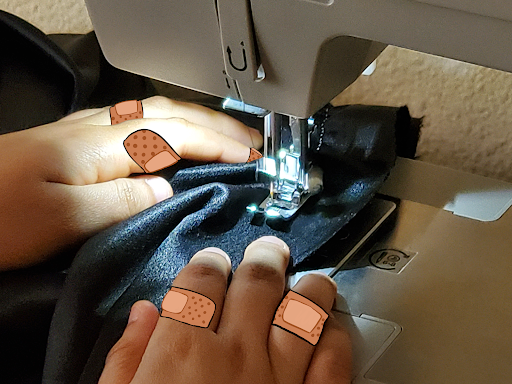Ashleigh Heaton
Editor-in-Chief
Are video games art?
It’s a bit of a frivolous question, but it has been a hot topic in the gaming community for quite some time. It started in 2006 with Chicago Sun-Times film critic Roger Ebert, who made the bold statement that “video games can never be art”.
If you’re not familiar with gamers, you should know that we are highly protective of our games and consoles – you diss our game, we diss you right back. So by collectively dissing the entirety of videogame, Ebert set himself up for a nerdy beat-down that turned in to a legitimate, thought-out debate between anyone who cared.
So, are they or aren’t they?
In this columnist’s opinion, the answer is yes…and no. I don’t think saying video games can never be art is correct. I also don’t think saying video games are always art is true, either. The most correct way to say it is video games can be art.
Some video games are just what they are intended to be – games, and nothing more. It’s hard to argue that Mario Kart has artistically revealed to us the secrets of the universe (though you can argue the artistic value of its animation. See the fine line?)
On the other hand, there are plenty of games featuring fully realized worlds as well as intricately thought-out plots that have all the makings of art; you see this most with role-playing games (RPGs). For example, I challenge you to play Legend of Zelda: Twilight Princess without being emotionally attached to the plot line and sub sequentially enamored with the visual effects.
To complete a game of this caliber, you have to address several different aspects, from character design, voice acting and sound design, animation and scene design. For now, let’s skip the talk about pretty games being art – which is an art within itself – and focus on the first part I mentioned earlier: emotional attachment.
The beautiful thing about video games is they can be a means of storytelling, one of the most powerful forms of art. Sure, you may be controlling the main character, but in order to complete the game there are certain things you have to go through; in a lot of RPGs, whenever you come to a pivotal point in the game (and story), there’s usually a “cut scene” that acts as a mini-movie to advance the plot.
As well as intrinsic plot, video games can also have symbolic meaning. Let’s go back to Twilight Princess for this point, shall we? In the game, the main conflict centers on a corrupt leader of the twilight, or “dark”, world invading the world of light, aka Hyrule – it is only Link, the main character you play as, who can save the day by calling upon the spirits of light to completely seal away the threat.
I know, its weird, but work with me here.
The big symbolic reference is, of course, the struggle between light and dark, good and evil. However, there is also an underlying message of understanding that I find important; one of the other main characters is an exiled princess from the twilight world who puts aside your differences and acts as your sidekick and guide throughout the game. When you arrive in the twilight world, one important thing she says is along the lines of, “Please don’t judge my people because they have an evil leader – they have no choice. Just because we like the twilight doesn’t mean we’re bad people.”
It’s hard to miss the message there. Love. Understanding. The whole shebang.
Art has a different definition for different people – that’s probably why this debate still exists today. But to me, art is about finding a deeper understanding of humanity and ourselves, which is exactly what Twilight Princess as well as many other games accomplish, even if in a small way.
Yes, you’re probably not going to get a Picasso out of every single video game you play today – but the potential is there. And it’s not like the buck stops here, either; video games are constantly evolving in the way they are presented and the way we play them, so there’s a very big possibility their artistic capabilities will likewise evolve.
It’s not time to discredit the artistic potential of video games. Not quite yet.
Click here to see Chris Cummin’s opposite viewpoint.














